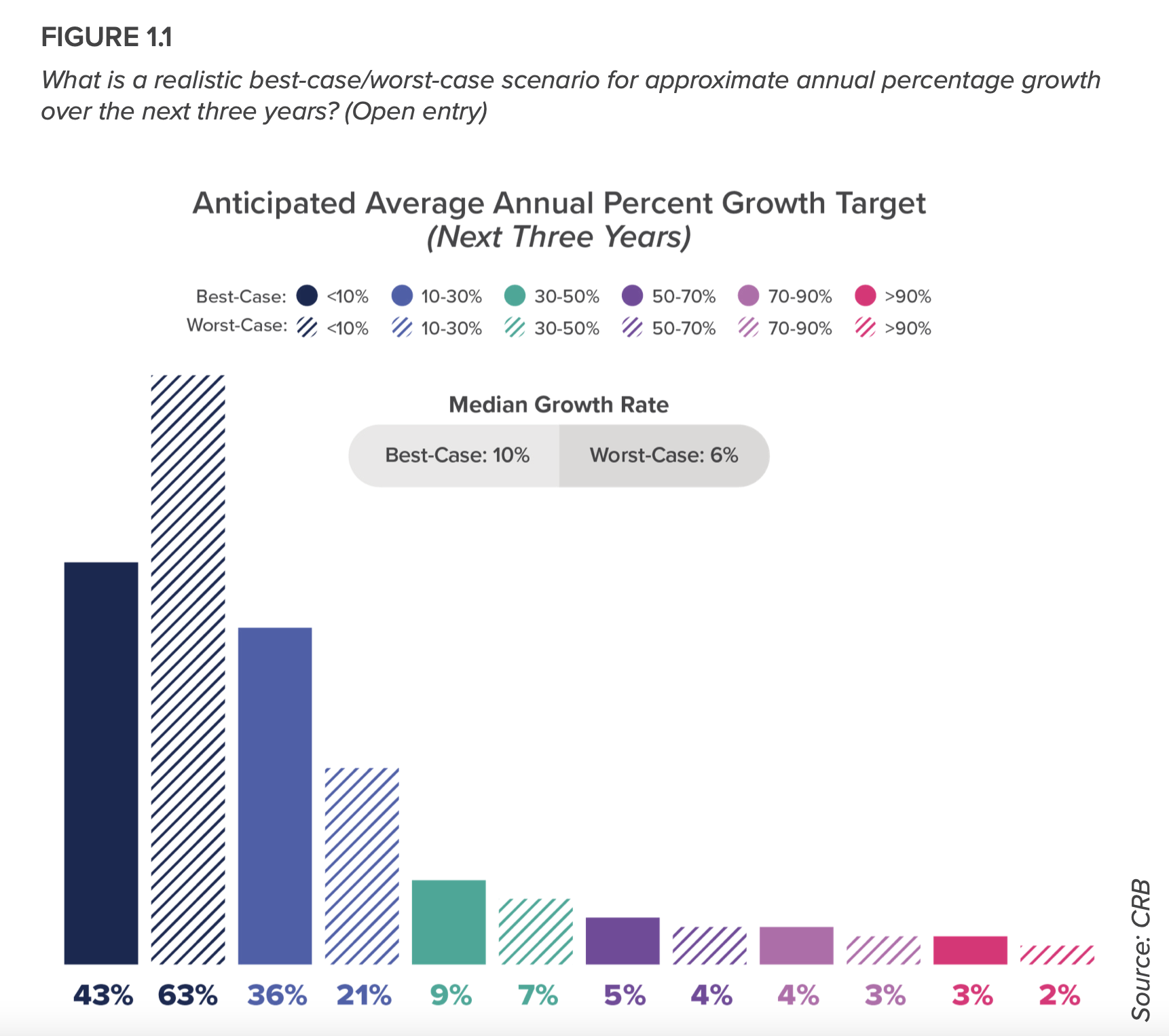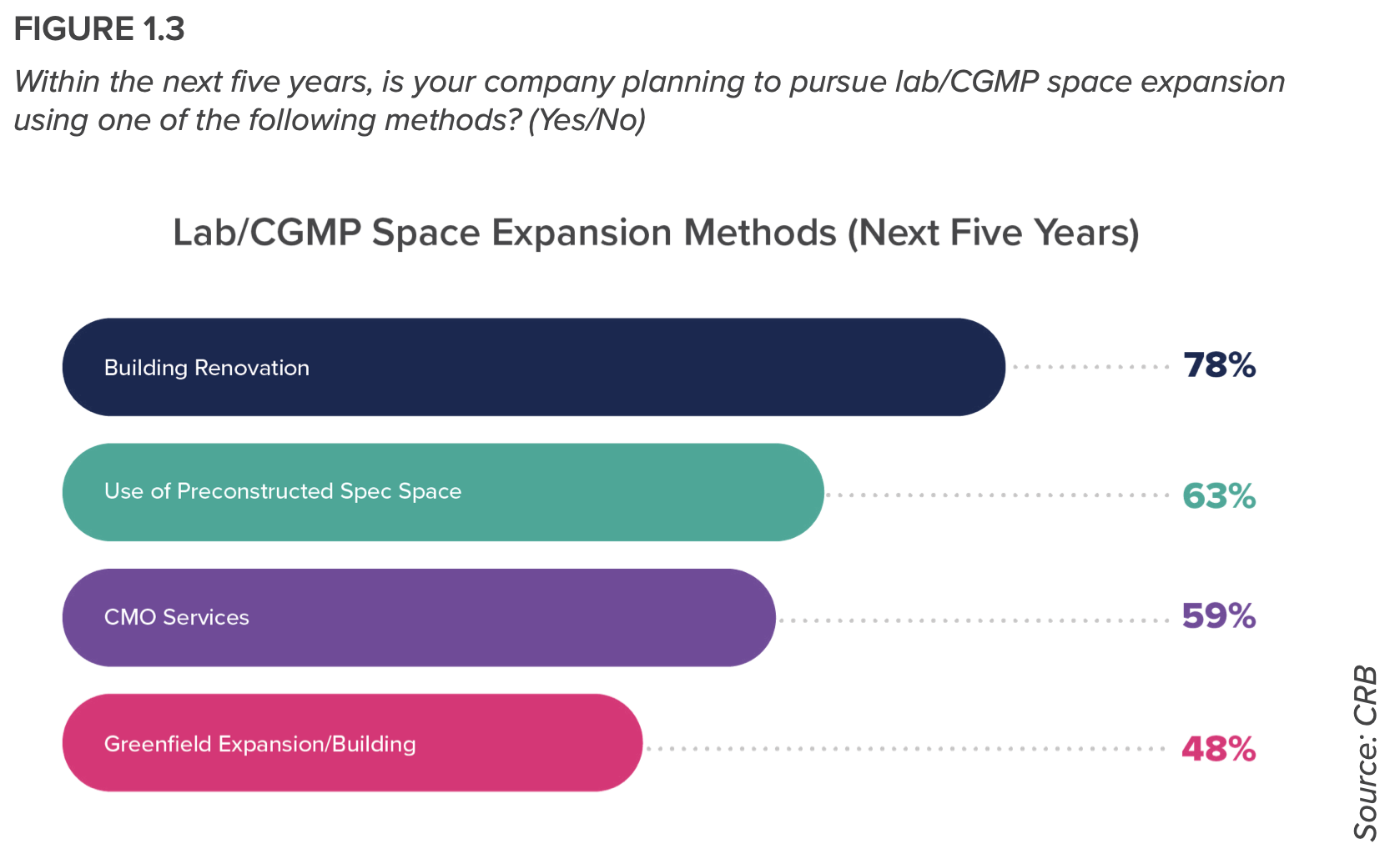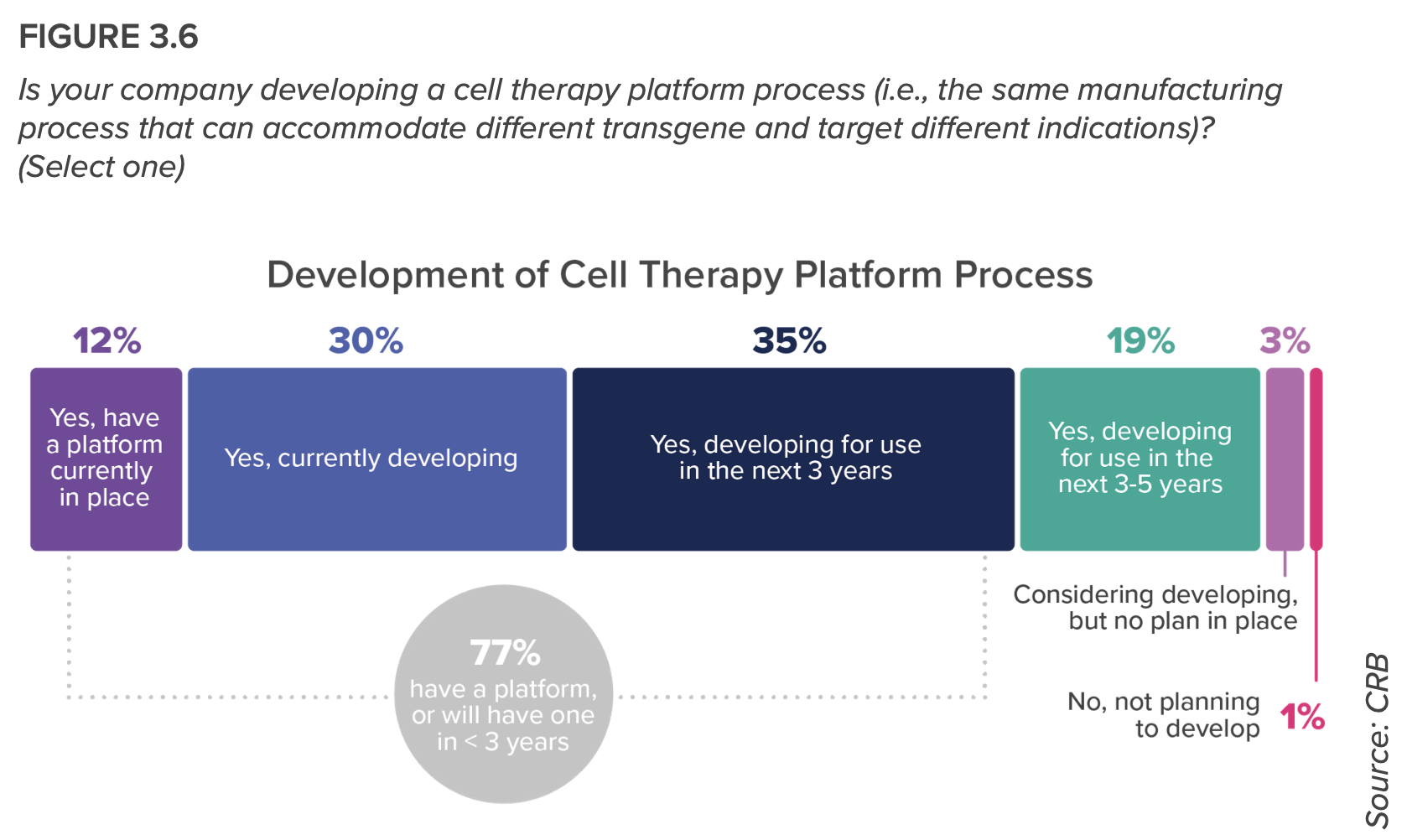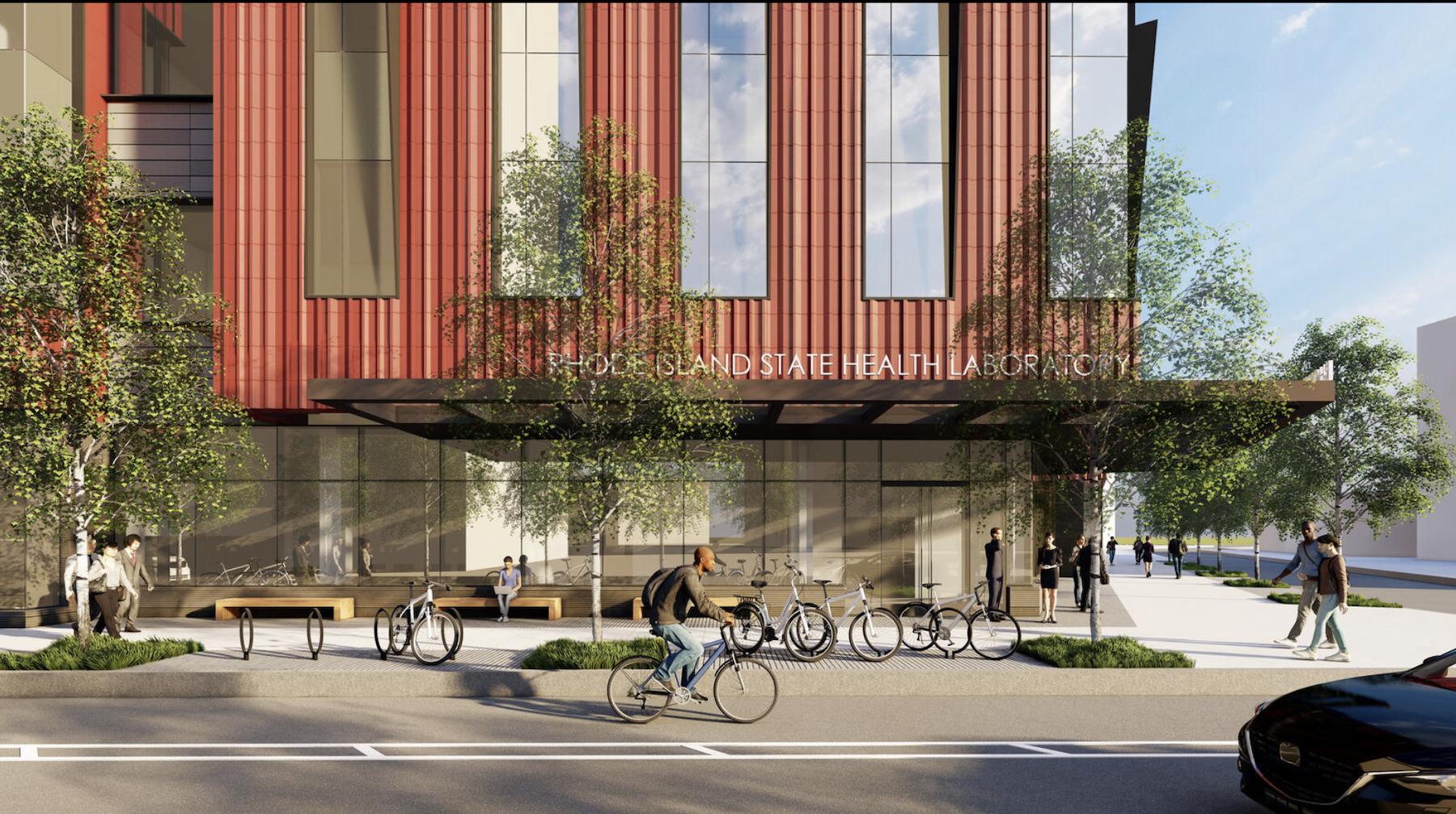“While the COVID-19 pandemic taught new lessons about the quick and safe delivery of critical vaccines, the global shock is only now being understood.” That’s the opening observation of the 98-page 2022 Life Sciences Report, published by the AC firm CRB and based on responses from nearly 500 industry leaders, which explores this industry sector’s R&D and growth strategies.
This is CRB’s third Horizons report, and its first to include Europe, where many of the industry’s leading organizations are paving the way through innovation, groundbreaking research, and new and dynamic ways of speeding therapies to patients.
CRB is seeing a rapidly maturing industry that’s in pursuit of more diversification. “The days of single-product specialization are receding,” the report states, as companies large and small are utilizing a wide array of tools to expand their pipeline and address diverse indications.
Nearly all respondents (90%) are developing and manufacturing multiple therapy modalities in a single building, or plan to do so in the future. And more than half of the respondents plans to rely on contract development and manufacturing organizations (CDMOs) over the next three years. “We’re seeing a rise in hybrid models—that is, owners who are offering their in-house manufacturing expertise for hire,” the report states.
As such, the nature of in-demand talent is changing, as companies mature towards more automated, AI-driven manufacturing models, with the traditional C-suite expanding to include roles previously unseen in this industry, such as “Chief Data Officer.”

 Cell therapies emerge as dynamic submarket
Cell therapies emerge as dynamic submarket
CRB divides its report into eight chapters, each with contextualized perspectives. Those chapters found that:
- Since the pandemic, companies have adopted an optimistic but more cautious approach to ongoing research and discovery. That means carefully weighing risks and rewards of capital spending and pipeline expansion while continuously pushing for new and exciting discoveries.
- Ribonucleic acid (RNA) technologies have catapulted into the spotlight because of COVID. In addition to preventing infectious diseases, these technologies—using non-coding and coding RNA—can be harnessed to treat other conditions, like cancer. When compared to other biologics, RNA technologies have the potential to increase speed to market, lower costs, and reduce regulatory requirements.

- More than 300 of this report’s respondents have cell therapies in their pipelines, creating one of the most dynamic—and challenging—submarkets. Researchers are leveraging standardized platforms to maximize the versatility and scalability of their processes, to where decentralized manufacturing will change the future of autologous production—“a future that will see cell therapies mature from our last line of defense to an accessible and expected level of patient care,” the report predicts.
- Change is also accelerating for gene therapies. Most respondents said they plan to leap from the small-scale batches necessary for early clinical trials to much larger manufacturing volumes within just three years. Suspension cell cultures, sterile filtration, stable cell lines, and in-house plasmids manufacturing are attracting an enormous volume of R&D activity among both owners and contract manufacturing organizations (CMOs), as this race toward the commercial market heats up.
Modular design will facilitate expansion

- Last year was a milestone year for therapeutic proteins, and not only because the U.S. Food and Drug Administration (FDA) approved the 100th antibody therapy on the market. The field of therapeutic proteins has come a long way—especially in the last few years wherein trends, technologies, and perceptions in the industry saw significant changes. Developers are strategizing for the future.
- The tailwinds from COVID-19 treatment innovation have unleashed a new era for drug product manufacturing: one that is looking beyond rare disease markets and smaller patient populations to search for the next blockbuster drug; one that is engaging with drug product formulations that are becoming increasingly more complex; and one that readily embraces automation and online/inline monitoring technologies even at the clinical production operations level.

- CRB’s experts are seeing an “encouraging evolution” in the journey to implementing all aspects of Pharma 4.0—shorthand for efficiencies through process visibility, faster decision making, and real-time system optimization—including smart end-user devices, advanced robotics, and digital twins. “We can see that in the abundance of recent acquisitions that have brought AI innovators into established life science companies,” the report states. But respondents remain sanguine about how to get there, knowing that budget constraints, organizational reluctance, and a lack of skilled labor might hold them back.
- Most respondents plan to expand over the next five years, with some indicating an intent to establish a footprint in other countries. Optimizing capital and operations expenditure in these expansion efforts means standardizing operations between sites, expediting regulatory approvals, and remaining agile to demand for new modalities and technologies. Hence, CRB concludes, a case for modular design.
Related Stories
Laboratories | Oct 23, 2024
From sterile to stimulating: The rise of community-centric life sciences campuses
To distinguish their life sciences campuses, developers are partnering with architectural and design firms to reimagine life sciences facilities as vibrant, welcoming destinations. By emphasizing four key elements—wellness, collaboration, biophilic design, and community integration—they are setting their properties apart.
Laboratories | Oct 2, 2024
Trends in scientific research environments: Q&A with Flad's Matt McCord
As part of an ongoing series, Matt McCord, AIA, NCARB, LEED AP BD+C, Associate Principal with Flad Architects, discusses the future of the scientific workplace.
Laboratories | Sep 27, 2024
Traditional lab design doesn't address neurodiverse needs, study finds
A study conducted by ARC, HOK, and the University of the West of Scotland, has revealed that half (48.1%) of all survey respondents who work in laboratory settings identify as neurodivergent.
Laboratories | Sep 26, 2024
BSL conversions: A cost-efficient method to support high-containment research
Some institutions are creating flexible lab spaces that can operate at a BSL-2 and modulate up to a BSL-3 when the need arises. Here are key aspects to consider when accommodating a rapid modulation between BSL-2 and BSL-3 space.
Higher Education | Sep 18, 2024
Modernizing dental schools: The intersection of design and education
Page's John Smith and Jennifer Amster share the how firm's approach to dental education facilities builds on the success of evidence-based design techniques pioneered in the healthcare built environment.
Great Solutions | Jul 23, 2024
41 Great Solutions for architects, engineers, and contractors
AI ChatBots, ambient computing, floating MRIs, low-carbon cement, sunshine on demand, next-generation top-down construction. These and 35 other innovations make up our 2024 Great Solutions Report, which highlights fresh ideas and innovations from leading architecture, engineering, and construction firms.
Laboratories | Jul 3, 2024
New science, old buildings: Renovating for efficiency, flexibility, and connection
What does the research space of the future look like? And can it be housed in older buildings—or does it require new construction?
Mass Timber | Jun 26, 2024
Oregon State University builds a first-of-its-kind mass timber research lab
In Corvallis, Oreg., the Jen-Hsun Huang and Lori Mills Huang Collaborative Innovation Complex at Oregon State University aims to achieve a distinction among the world’s experimental research labs: It will be the first all-mass-timber lab meeting rigorous vibration criteria (2000 micro-inches per second, or MIPS).
Healthcare Facilities | Jun 18, 2024
A healthcare simulation technology consultant can save time, money, and headaches
As the demand for skilled healthcare professionals continues to rise, healthcare simulation is playing an increasingly vital role in the skill development, compliance, and continuing education of the clinical workforce.
Laboratories | May 24, 2024
The Department of Energy breaks ground on the Princeton Plasma Innovation Center
In Princeton, N.J., the U.S. Department of Energy’s Princeton Plasma Physics Laboratory (PPPL) has broken ground on the Princeton Plasma Innovation Center (PPIC), a state-of-the-art office and laboratory building. Designed and constructed by SmithGroup, the $109.7 million facility will provide space for research supporting PPPL’s expanded mission into microelectronics, quantum sensors and devices, and sustainability sciences.

















